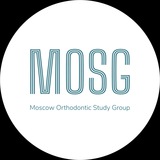Join our case discussions on Facebook!
You may post any of your cases to discuss or get some help in planning.
https://www.facebook.com/groups/629407375790894/
You may post any of your cases to discuss or get some help in planning.
https://www.facebook.com/groups/629407375790894/
Get in to discuss the full records on this new case! https://www.facebook.com/groups/629407375790894/
Facial photos like these may lead someone to believe in the wedge effect. That’s why it’s so important to superimpose cephs!
24/7 splints prescribed for a prolonged wear is a deliberate harm to occlusion!
The irony is that we see this type of nonsense primarily from the occlusionists.
The irony is that we see this type of nonsense primarily from the occlusionists.
Does malocclusion cause TMD?
Anonymous Poll
0%
Yes, always! That’s why articulators never have TMDs!
19%
I spent a fortune on gnathological courses, so at least in some cases it should.
69%
According to the orthodontic literature I have read, it doesn’t. My own experience tells the same.
13%
People are dying every day because of their malocclusions!
It seems to me that our group has a bunch of occlusionists in it. Before I remove you guys from this group, I want you to answer a little question that has been puzzling me for a while. If you guys really think that occlusion plays a role in TMD (what obviously has no grounds) why then the “treatment” I always see from your camp is aimed at depriving the patient from any occlusion at all?
Both occluding and non-occluding splints are effective in alleviating TMD symptoms and reducing masticatory-muscle activity in most myogenous TMD patients.
https://pubmed.ncbi.nlm.nih.gov/4500373/
https://pubmed.ncbi.nlm.nih.gov/16774505/
In arthrogenous TMD patients, the goal of splint therapy is not to recapture a displaced disc or to change condyle-fossa relationship, but to reduce pressure (again, coming from masticatory muscles) on the highly vascularized and innervated retrodiscal tissues and thus promote their fibrous adaptation.
All in all, splint therapy is aimed at muscle relaxation, not at the correction of occlusion, disc recapturing or permanent alteration of condyle-fossa relationship.
https://pubmed.ncbi.nlm.nih.gov/4500373/
https://pubmed.ncbi.nlm.nih.gov/16774505/
In arthrogenous TMD patients, the goal of splint therapy is not to recapture a displaced disc or to change condyle-fossa relationship, but to reduce pressure (again, coming from masticatory muscles) on the highly vascularized and innervated retrodiscal tissues and thus promote their fibrous adaptation.
All in all, splint therapy is aimed at muscle relaxation, not at the correction of occlusion, disc recapturing or permanent alteration of condyle-fossa relationship.
A continuous intrusion arch is tied off-center to the left. What effect does it have on the cant of the occlusal plane of the incisors and the posterior segments in the frontal view? Posterior segments are rigidly connected by a TPA. Replace the force through the CR for the answer.
You can sketch on this illustration and post your answer in the comments.
Please open Telegram to view this post
VIEW IN TELEGRAM
Hey, let’s start the week with a lecture by legendary William Proffit on myofunctional therapy. http://www.watchseminars.com/seminars/51/myofunctional-therapy
This passage on TMD and occlusion is from the first chapter of “Contemporary Orthodontics” by William Proffit.
“Some dentists have suggested that even minor imperfections in the occlusion serve to trigger clenching and grinding the teeth. If this were true, it would indicate a real need for perfecting the occlusion in everyone, to avoid the possibility of developing facial muscle pain. Because the number of people with at least moderate degrees of malocclusion (50% to 75% of the population) far exceeds the number with TMD (5% to 30%, depending on which symptoms are examined), it seems unlikely that dental occlusion alone is enough to cause hyperactivity of the oral musculature. A reaction to stress usually is involved. Some individuals react by clenching and grinding their teeth; others develop symptoms in other organ systems. An individual almost never has both ulcerative colitis (also a common stress-induced disease) and TMD.
Some types of malocclusion (especially posterior crossbite with a shift on closure) correlate positively with TMJ problems and other types do not, but even the strongest correlation coefficients are only 0.3 to 0.4. This means that for the great majority of patients, there is no association between malocclusion and TMD. Therefore orthodontics as the primary treatment for TMD almost never is indicated, but in special circumstances (see Chapter 18) it can be a useful adjunct to other treatment for the muscle pain.”
“Some dentists have suggested that even minor imperfections in the occlusion serve to trigger clenching and grinding the teeth. If this were true, it would indicate a real need for perfecting the occlusion in everyone, to avoid the possibility of developing facial muscle pain. Because the number of people with at least moderate degrees of malocclusion (50% to 75% of the population) far exceeds the number with TMD (5% to 30%, depending on which symptoms are examined), it seems unlikely that dental occlusion alone is enough to cause hyperactivity of the oral musculature. A reaction to stress usually is involved. Some individuals react by clenching and grinding their teeth; others develop symptoms in other organ systems. An individual almost never has both ulcerative colitis (also a common stress-induced disease) and TMD.
Some types of malocclusion (especially posterior crossbite with a shift on closure) correlate positively with TMJ problems and other types do not, but even the strongest correlation coefficients are only 0.3 to 0.4. This means that for the great majority of patients, there is no association between malocclusion and TMD. Therefore orthodontics as the primary treatment for TMD almost never is indicated, but in special circumstances (see Chapter 18) it can be a useful adjunct to other treatment for the muscle pain.”
PIIS0889540625000605.pdf
217.7 KB
Dr. Kandasamy rocks again!
“Airways are like TMD controversy on steroids.”
What’s interesting, airway-friendly folks are usually the exact same people who previously were trying to make a buck on TMD…
“Airways are like TMD controversy on steroids.”
What’s interesting, airway-friendly folks are usually the exact same people who previously were trying to make a buck on TMD…
